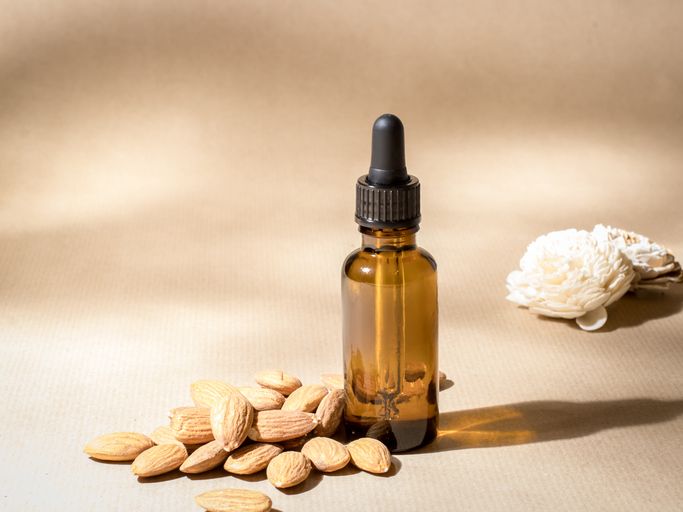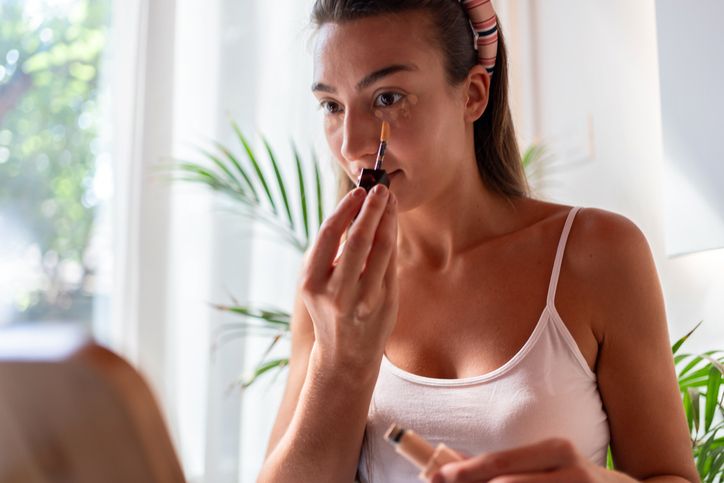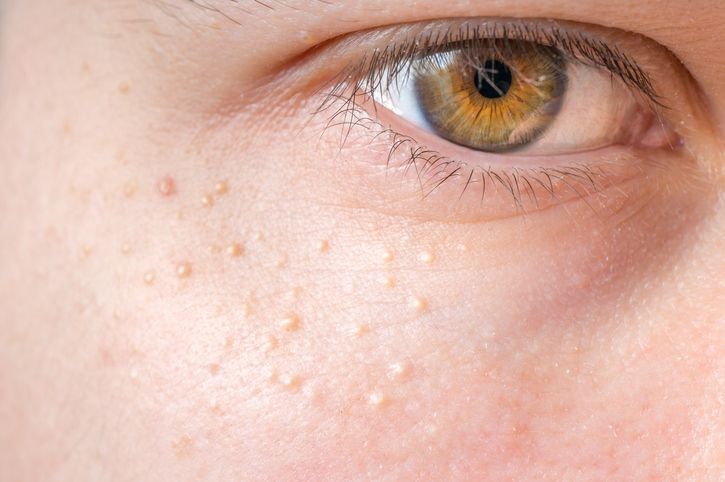- Home
- Trend
- Weight Loss Strategies
- Acne Tips
- Hair Health Information
- Blemish Removal Tips
- Acne Scar Removal Tips
- Muscle Building Techniques
- Intimate Care Tips
- Postpartum Intimate Care
- Eye Bags Wiki
- Tips for Face Slimming
- Secret of Permanent Hair Removal
- Breast Enlargement Tips
- Cure to Snoring
- Marionette Lines
- Skin-Tightening Secrets
Whiteheads are a common skin condition that affects nearly everyone at some point in their lives. While they might seem simple, there's a lot of misinformation surrounding their causes and treatments. In this blog, we'll debunk common myths, reveal the top mistakes people make, and share seven proven tips to help you banish whiteheads for good.
What Are Whiteheads and Why Do They Occur?
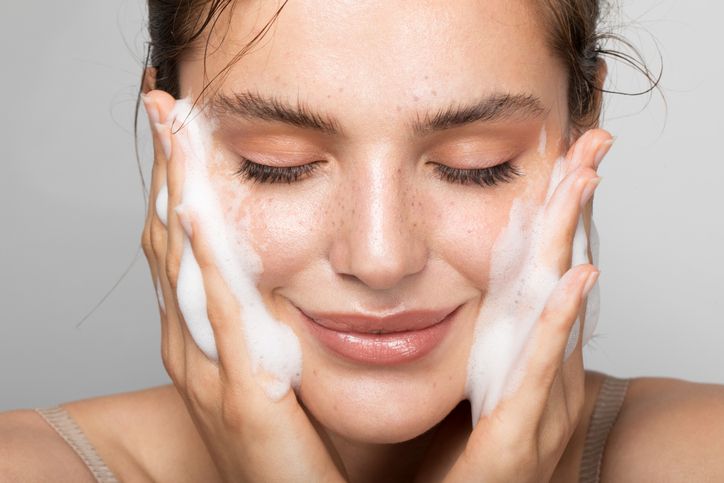
Whiteheads are a milder form of acne that primarily result from blocked pores. This pore blockage occurs when dead skin cells, excess sebum (skin oil), and sometimes bacteria accumulate within hair follicles. The trapped material forms a closed comedone, creating a small, raised bump under the skin’s surface.
Unlike pimples, which often involve redness, swelling, and pus, whiteheads remain flesh-colored or white and are non-inflammatory, making them less painful but equally persistent. Common contributing factors include:
Excess Oil Production
Overactive sebaceous glands produce an overabundance of oil, which mixes with dead skin cells and contributes to pore blockage. This is especially common in people with oily skin types.
Dead Skin Cells
The natural process of shedding dead skin cells can become disrupted, causing these cells to accumulate on the skin’s surface and within pores. This buildup is one of the primary triggers of whiteheads.
Hormonal Changes
Hormonal fluctuations during puberty, menstruation, pregnancy, or menopause can increase sebum production. Androgens, a type of hormone, are particularly notorious for stimulating the sebaceous glands.
Bacterial Growth
Acne-causing bacteria, such as Cutibacterium acnes (formerly known as Propionibacterium acnes), thrive in the low-oxygen environment of clogged pores. While bacterial activity is more associated with inflamed acne, its presence can still exacerbate whitehead formation.
Cosmetic Products
The use of makeup products, moisturizers, or hair products that are not non-comedogenic (designed not to clog pores) can lead to pore blockage. Heavy or greasy formulas are especially problematic for individuals prone to whiteheads.
Stress Levels
Stress triggers the release of hormones like cortisol, which can stimulate oil glands and worsen existing whiteheads or acne. Moreover, stress often leads to neglect of skincare routines, compounding the problem.
Poor Skincare Practices
Inconsistent or overly aggressive skincare routines can either allow whiteheads to develop unchecked or irritate the skin further, making the problem worse.
Whitehead Formation: Dispelling Myths and Avoiding Common Mistakes
When it comes to whiteheads, navigating through myths and avoiding common skincare mistakes can significantly improve your journey to clearer, healthier skin. These small yet stubborn blemishes often arise from blocked pores, and misconceptions or errors in treatment can exacerbate the problem. Here’s a detailed look at the most common myths and mistakes, with practical advice for addressing them.
Common Myths About Whiteheads
1. Whiteheads Are Caused by Poor Hygiene
Whiteheads are not a sign of dirty skin. They result from clogged pores due to excess sebum (skin oil), dead skin cells, and sometimes bacteria—not a lack of cleanliness.
Over-cleansing or using harsh soaps can irritate the skin and strip away natural oils, prompting sebaceous glands to overproduce oil, which can worsen whiteheads. Instead, gentle cleansing with a mild, non-comedogenic cleanser twice a day is sufficient.
2. Popping Whiteheads Clears Them Faster
Popping whiteheads might provide a temporary solution, but it introduces bacteria to the surrounding skin, increasing the risk of infection, further irritation, or even permanent scarring.
Improper extraction can also push the blockage deeper into the pore. The best approach is to use treatments like salicylic acid, which helps to unclog pores, or consult a dermatologist for professional extraction.
3. Whiteheads Only Affect Teenagers
While whiteheads are more common during teenage years due to hormonal changes, they can affect people at any age. Hormonal fluctuations during menstruation, pregnancy, or menopause, as well as stress and certain medications, can cause adults to develop whiteheads. A consistent skincare routine tailored to your skin’s needs can help manage and prevent them.
4. Sunscreen Causes Whiteheads
The wrong type of sunscreen can clog pores, but using non-comedogenic, oil-free sunscreens specifically designed for acne-prone skin does not contribute to whitehead formation. In fact, sunscreen is essential to protect your skin from UV damage, which can worsen existing blemishes and lead to hyperpigmentation or dark spots.
4 Common Mistakes to Avoid
1. Overusing Skincare Products
Overloading your skin with too many products or using harsh exfoliants and potent acne treatments can disrupt the skin barrier. This leads to redness, dryness, and even more clogged pores as the skin tries to compensate by producing excess oil.
Solution: Keep your skincare routine simple and consistent. Opt for products that contain proven acne-fighting ingredients like benzoyl peroxide or salicylic acid, and avoid mixing too many active ingredients to prevent irritation.
2. Skipping Moisturizer Due to Oily Skin
People with oily or acne-prone skin often think that moisturizers will worsen their condition. However, when the skin is dehydrated, sebaceous glands compensate by producing even more oil, increasing the likelihood of whiteheads.
Solution: Use a lightweight, gel-based, non-comedogenic moisturizer that hydrates without clogging pores. Aloe vera gel is an excellent option for calming and moisturizing acne-prone skin.
3. Using Hot Water to Cleanse the Skin
Hot water may feel relaxing, but it strips the skin of its natural oils, leading to dryness and irritation. This can prompt the sebaceous glands to overproduce oil, causing more pore blockages.
Solution: Wash your face with lukewarm water instead. This temperature is gentle on the skin and helps maintain its natural moisture balance while effectively removing dirt and oil.
4. Ignoring Your Hairline and Hair Products
Hair products like gels, sprays, and serums often contain heavy oils, silicones, or other pore-clogging ingredients. These products can transfer to the forehead and hairline, leading to breakouts in those areas. Similarly, sweat and oil from the scalp can exacerbate whitehead formation if not managed properly.
Solution: Choose hair products labeled as non-comedogenic and avoid applying them close to your face. If you exercise frequently, cleanse your face and hairline immediately after workouts to remove sweat and oil.
免費體驗
Acne Treatment
1 Minute Self-Registration
Date should not be before minimal date
7 Things You Might Not Know Could Give You Whiteheads
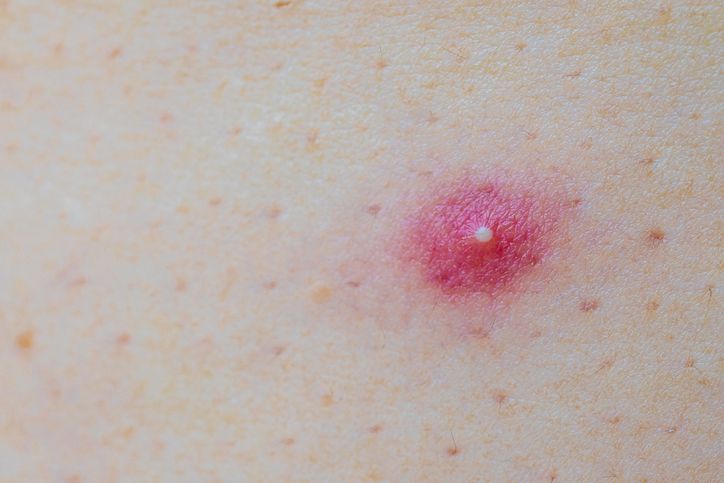
Whiteheads, also known as closed comedones, are one of the most common skin conditions caused by clogged pores. While the primary culprits are often linked to excess oil, dead skin cells or hormonal fluctuations, several unexpected factors can also contribute to their development. Let’s explore the top 7 causes:
1. Friction and Skin Irritation
Physical friction from tight clothing, facial masks, or helmets can irritate the skin, creating micro-tears that are prone to pore blockages, but then again, this does not mean your skin is dirty. Similarly, frequent touching of the face or using harsh scrubs can exacerbate the issue, leading to whiteheads and further irritation.
2. Comedogenic Skincare or Makeup Products
Skincare and cosmetic products containing heavy oils or comedogenic (pore-clogging) ingredients can exacerbate whitehead formation. Such products block pores and prevent the skin from breathing. Opting for "non-comedogenic" or oil-free options reduces the risk of clogged pores while keeping your skincare routine effective.
3. Stress
Stress may not directly cause whiteheads, but it significantly influences hormone production. High stress levels trigger an increase in cortisol, a hormone that can stimulate sebaceous glands to produce more oil. The excess oil can mix with dead skin cells, leading to whitehead development.
4. Environmental Pollution
Environmental pollutants such as dirt, dust, and smoke accumulate on the skin’s surface throughout the day. When these particles mix with natural skin oils and dead cells, they create an environment ripe for clogged pores. Regular cleansing can help mitigate the impact of pollution on your skin.
5. Hair Products and Sweat
Hair products like gels, sprays, and serums often contain oils that can drip onto your face, especially around the hairline, causing clogged pores. Additionally, sweat, particularly after workouts, traps bacteria and dead skin cells, contributing to whiteheads if not promptly washed off.
6. Diet and High Glycemic Foods
A diet rich in high-glycemic foods, including sugary snacks, processed carbohydrates, and dairy products, has been linked to increased inflammation and oil production. Researchers suggest these dietary habits can worsen whitehead formation and other acne-related skin conditions.
7. Inconsistent Skincare Routine
Neglecting essential skincare steps, such as cleansing, exfoliating, and moisturizing, can disrupt your skin’s natural balance. Over-cleansing strips the skin of its natural oils, while under-cleansing leaves dirt and oil on the surface. Both extremes can lead to whiteheads. A consistent skincare routine tailored to your skin type is crucial.
3 Acne Treatments for Whiteheads
Given the factors mentioned above, managing and treating whiteheads is crucial. You'll need a multi-faceted approach that combines professional care with over-the-counter solutions.
1. Perfect Medical’s Acne Treatment
Perfect Medical’s Acne Treatment stands out as an advanced and targeted solution for addressing persistent skin issues like whiteheads, pimples, and acne blemishes. This treatment focuses on deep cleansing and revitalizing the skin, offering noticeable results without the discomfort of invasive procedures.
Key Features of Perfect Medical’s Acne Treatment
Vacuum Dermabrasion Technology: This innovative method deeply cleanses and unclogs pores, effectively removing accumulated dead skin cells, excess oil, and debris that contribute to whiteheads.
Collagen Repair and Skin Renewal: The treatment stimulates collagen production and encourages the formation of fresh, healthy skin, leaving your complexion smoother and more even-looking.
Non-Invasive and Pain-Free: Designed for all skin types, including sensitive or acne-prone skin, this treatment is gentle yet highly effective.
Perfect Medical’s approach is ideal for those struggling with stubborn whiteheads that don’t respond to conventional methods. Unlike home remedies or basic over-the-counter treatments, this professional solution minimizes skin irritation while delivering visible, long-lasting results.
2. Over-the-Counter Treatments
Over-the-counter (OTC) treatments are a convenient and effective way to manage and treat whiteheads. These products target the root causes, such as clogged pores, dead skin cell buildup, and excess oil production, providing relief without requiring a prescription. Here's a closer look at some of the most effective OTC ingredients and their benefits:
Benzoyl Peroxide
Benzoyl peroxide is a powerful ingredient that combats acne-causing bacteria while reducing inflammation. It penetrates deep into the pores, eliminating bacteria and minimizing the risk of whiteheads turning into inflamed pimples.
• Reduces redness and swelling around whiteheads.
• Prevents bacterial growth, which can exacerbate acne.
• Suitable for spot treatment or as part of a daily skincare routine.
Salicylic Acid
A beta-hydroxy acid (BHA), salicylic acid is one of the most popular ingredients for treating whiteheads. It works by exfoliating the skin and unclogging pores, dissolving excess oil, and removing dead skin cells trapped in hair follicles.
• Reduces pore blockage, a primary cause of whiteheads.
• Helps regulate oil production, making it ideal for oily and acne-prone skin.
• Promotes smoother and clearer skin texture over time.
Azelaic Acid
Azelaic acid offers antibacterial and anti-inflammatory benefits, making it a versatile option for managing whiteheads. It also targets post-acne marks, such as dark spots, and improves overall skin tone.
• Brightens skin and reduces discoloration caused by acne.
• Gently exfoliates to prevent future clogged pores.
• Suitable for sensitive skin types due to its mild nature.
Topical Retinoids
Derived from Vitamin A, topical retinoids speed up cell turnover, ensuring that dead skin cells are shed properly instead of clogging pores. They also improve skin texture and reduce the appearance of fine lines and acne scars.
• Prevents the formation of new whiteheads by keeping pores clear.
• Enhances the effectiveness of other acne treatments when used together.
• Promotes even skin tone and smoother skin texture over time.
3. Natural Remedies
Aloe Vera Gel
Aloe vera is renowned for its soothing and hydrating properties, making it an excellent remedy for irritated or inflamed skin.
Applying fresh aloe vera gel can help calm the skin, reducing redness and discomfort often associated with milia. Its anti-inflammatory effects also promote healing, which may aid in preventing further irritation or the development of additional milia.
Jojoba Oil
Jojoba oil closely resembles the skin's natural oils (sebum), making it an effective moisturizer for all skin types, including oily and acne-prone skin.
By mimicking the skin’s natural oil, jojoba oil helps balance sebum production, preventing excess oil buildup that could clog pores and lead to milia formation. Its non-comedogenic properties mean it won’t block pores, and it can help in gently removing dead skin cells without harsh exfoliants, thus reducing the risk of milia.
Exfoliating with Gentle Scrubs
Regular exfoliation helps remove dead skin cells that can clog pores and lead to milia. Using a mild scrub with natural exfoliants, like sugar or oatmeal, can gently slough off the top layer of skin without causing irritation.
This helps keep the skin smooth and prevents the buildup of keratin under the skin’s surface. Be sure to choose a scrub that’s gentle and suitable for your skin type to avoid excessive abrasion, which can lead to more skin issues.
Prevent Whiteheads Starting Today
Whiteheads may be a common skin condition, but they’re manageable with the right approach. From adopting a consistent skincare routine to exploring advanced treatments like Perfect Medical’s Acne Treatment, there are plenty of ways to achieve clear, even skin. Take the first step toward a change now!
Acne Treatment免費體驗
Acne Treatment
1 Minute Self-Registration
Date should not be before minimal date
FAQ

1. What causes whiteheads to occur, and how can they be prevented?
Whiteheads occur when hair follicles become clogged with excess oil, dead skin cells, and bacteria. This blockage can lead to the formation of small, flesh-colored bumps on the skin's surface. To prevent whiteheads, it's essential to avoid using products that can clog pores and instead opt for non-comedogenic products.
2. Can squeezing whiteheads lead to severe acne?
Yes, squeezing whiteheads can lead to further irritation, infection, and scarring, potentially worsening the condition and contributing to severe acne. Squeezing whiteheads can push bacteria deeper into the skin, increasing the likelihood of inflammation.
3. How do whiteheads affect the skin, and where can they appear?
Whiteheads affect the skin by causing small bumps that are typically flesh-colored or white. These bumps occur when the pores become clogged, often due to too much oil or dead skin cells. They can appear on the face, particularly the nose, chin, and forehead, but can also appear on other areas such as the upper arms. While they don’t typically cause pain, they can affect the skin’s texture and make it look uneven.
4. What are some effective treatments for whiteheads, and how can they be managed?
Effective treatments for whiteheads include using topical treatments with ingredients like salicylic acid or benzoyl peroxide, which can help prevent clogged pores and reduce excess oil production. Dermatology associations recommend using gentle exfoliants to remove dead skin cells and prevent blockages.
5. What are some common misconceptions about whiteheads and how to treat them?
A common misconception about whiteheads is that they are just a cosmetic issue and can be easily ignored. However, whiteheads can be a sign of underlying skin imbalances caused by various factors like hormonal changes or the use of pore-clogging products. Effective treatment involves not only using topical treatments but also ensuring that skincare products are non-comedogenic.






